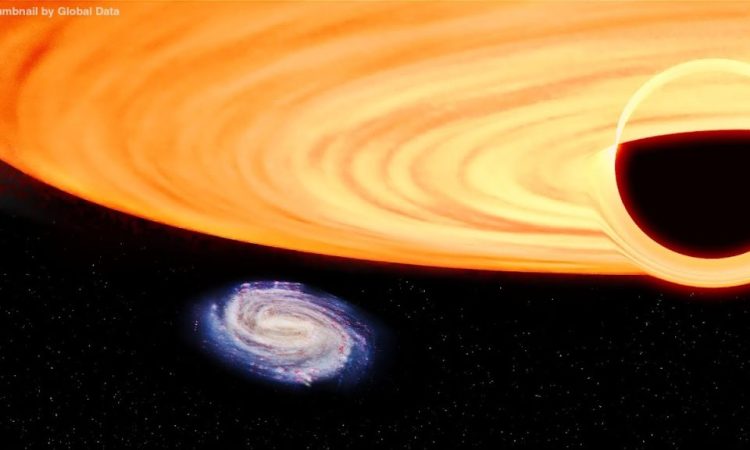
A film with frightening proportions: the size of the black hole TON 618 compared to our Galaxy, the Milky Way
10.4 billion light years away Terrain the direction of the constellation of the hunting dogs. That’s where the black hole to the center of the quasar TON 618with a mass estimated at 66 billion times that of Sole.
Let’s do the calculation:
- The mass of the Sun is 2 × 10^30 kg;
- The mass of Ton 618 is 1.32 x 10^41 kg.
Just over a 1 followed by 41 zeros! Try to write it down and understand what it is about. A mind-boggling number! In the following video, you can find it compared with the Milky Way, our Galaxy.
To learn more,
What is a Quasar?
They are highly energetic manifestations in the nuclei of some galaxies, which are believed to be fueled by the accretion of gas on supermassive black holes (with a minimum mass greater than hundreds of thousands of times that of the Sun) placed at their center. Such monsters are estimated to swallow the mass equivalent of hundreds of planet Earths per minute! These supermassive black holes they form and grow mainly during galaxy mergers. When two galaxies of comparable mass merge, their central black holes merge and a small percentage of their gas is accumulated by the new black hole through the formation of an accretion disk, all over a time scale of about 10 millions of years.
A million suns
During this time, the conversion of its gravitational energy into thermal energy, combined with large frictions, causes the gas to heat up enormously, up to hundreds of thousands of degrees. The acceleration of the gas to relativistic speeds, thermal emission and other mechanisms (such as the sicrotron and inverse Compton processes, respectively in the radio and gamma bands) thus ensure that a fraction of the mass increases (up to values of the order of 10%) is emitted in the form of radiation, reaching enormous luminosities, up to a million billion suns!
Cover image credit Global Data (YouTube)
Sources: Kauffmann et al.; My. Not. A. Astron. Soc.311, 576±588 (2000). Massaro et al. 2009; Astronomy and Astrophysics, Volume 495, Issue 2, 2009, pp.691-696
If the work we are doing seems useful to you and for everyone, you can also decide to participate and join Passione Astronomia. We can promise you that with your help there will be more and more content to follow and understand the universe better. Thank you for your continued support!

